March 23, 2000
- Wrong info last lecture: Homework #4 due next week! But it is half as long.
- Curve for the exam:
- Drop date 3/31 (next Friday)
- Mercury overview
- Observing Mercury from Earth
- 3-2 spin-orbit coupling of Mercury
- Mercury's surface
- Evidence for iron core
- formation theories
- Magnetic field
- Mercury has no atmosphere
- Too hot
- Not enough gravity
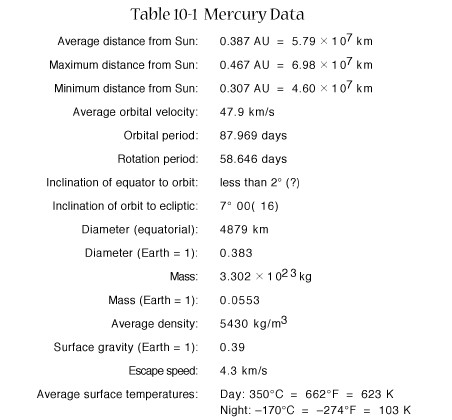
- Mercury orbits close to the Sun
- visible to naked eye only within 2 hours of sunrise or sunset
- brightest object in the sky
- orbit is eccentric, some elongations are greater than others
- telescopes see Mercury best during the day (with filters)
- best view through atmosphere is straight up
- Mercury sometimes transits the sun (analogy solar eclipse)
- like the moon, not everything lines up every time
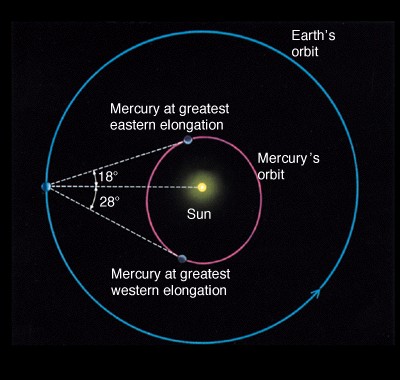
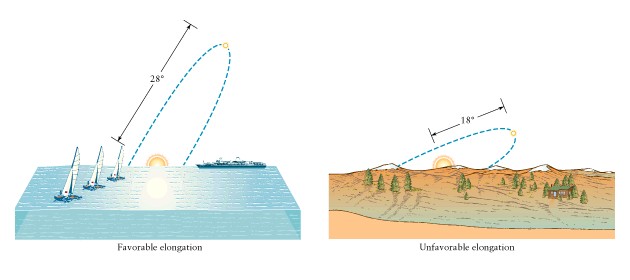
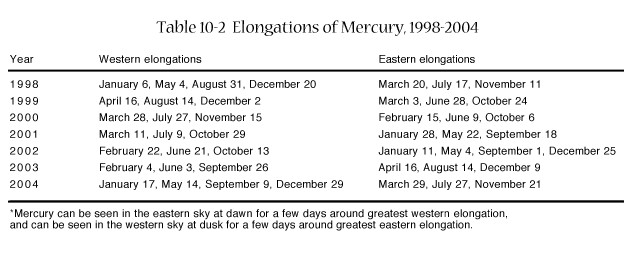
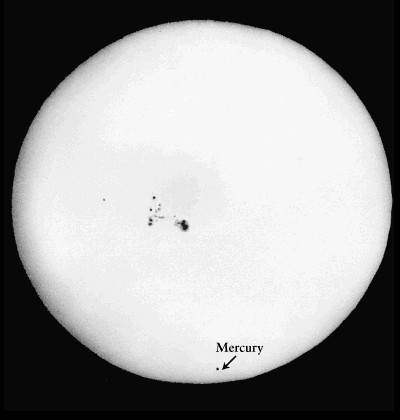
- Mercury rotates 3 times every 2 orbits around the sun
- Most planets/satellites rotate independently or in 1-to-1 spin-orbit coupling (synchronous rotation, e.g. our moon)
- Reason: Mercury is lopsided and has an eccentric orbit
- Earth-based optical telescopes can't see that well
- Discovered using radio telescopes
- Measured temperature of nighttime side to be too warm
- used RADAR to measure rate of rotation
- If you stood on Mercury, the sun would move backwards sometimes! Also very cold or very hot
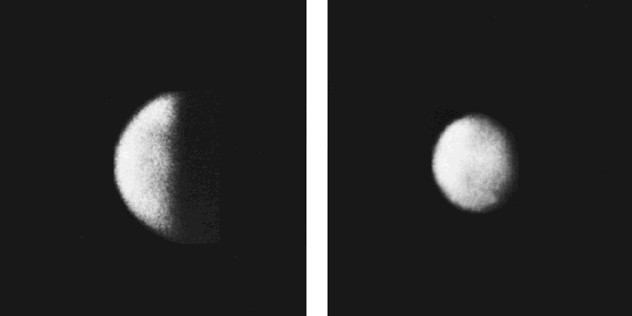
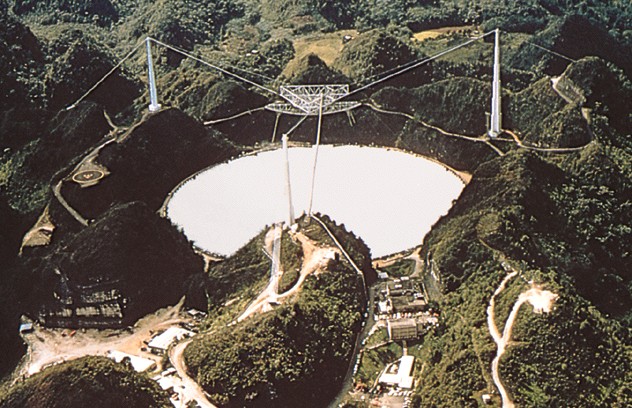
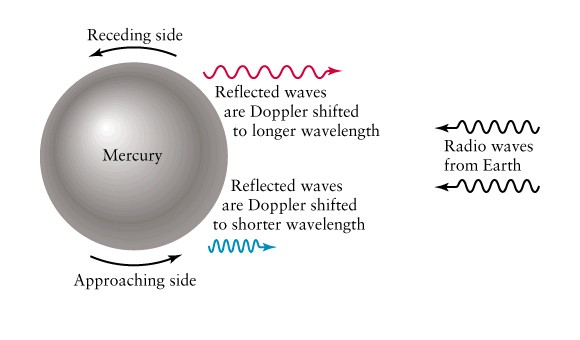
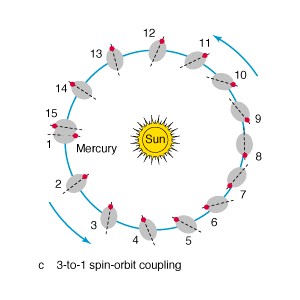
Mercury's surface
- Mariner 10 (unmanned) mapped 45% of surface
- Surface looks a lot like our moon
- Cratering period probably same as our moon
- Intercrater plains probably lava flows
- Long lines of cliffs call "scarps" evidence of crust contraction
- analogy: skin of dried apple
- Like our moon, Mercury had at least one very large impact toward the end of the bombardment period
- Mercury: Caloris basin
- Moon: Orientale Basin
- Impact so large, seismic waves focused on other side of moon/mercury and made jumbled hills
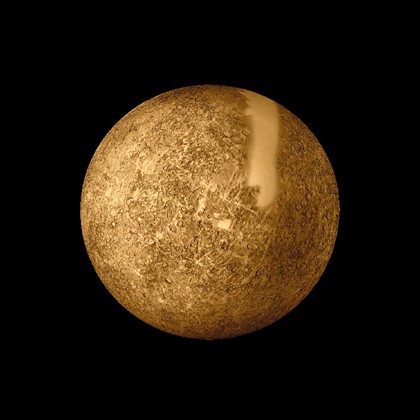
Mercury:
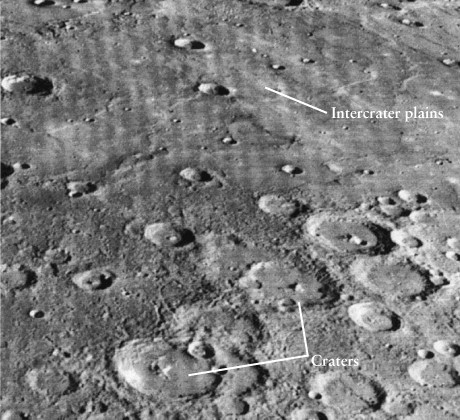
Our moon:
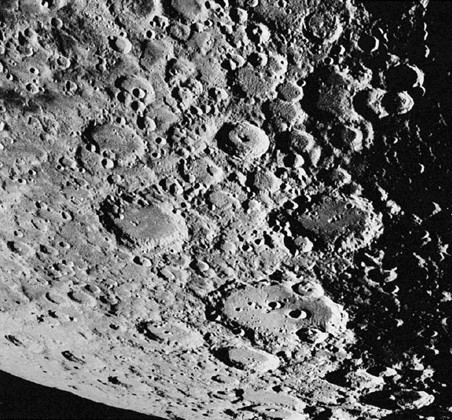
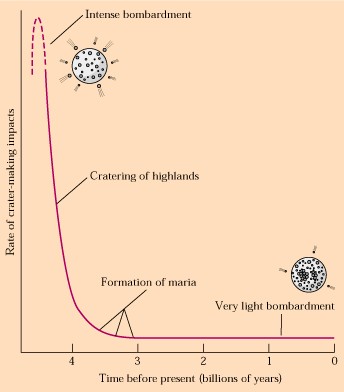
Mercury:
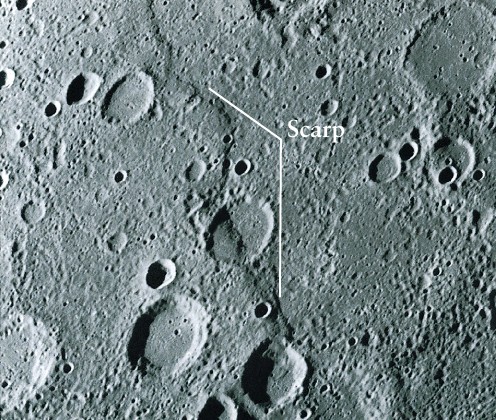
Mercury left, moon right
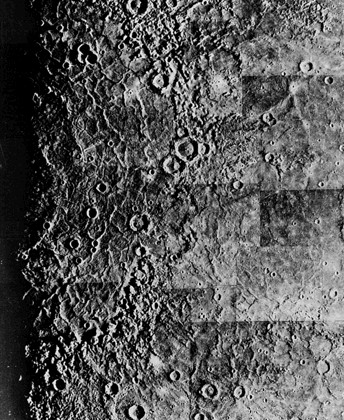
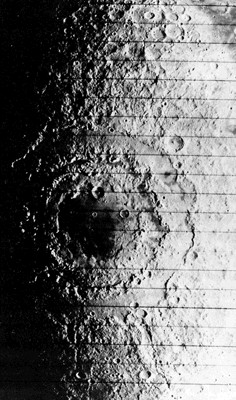
Jumbled hills on Mercury
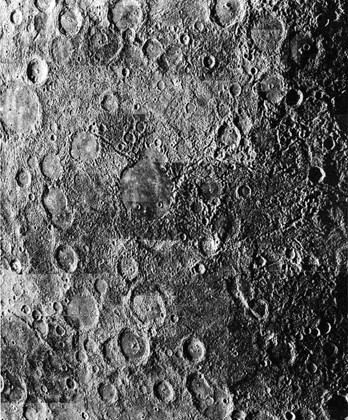
- Mercury's average density is 5430 kg/m3
- Earth's is 5520 kg/m3
- Surface rock density on Earth is 3000 kg/m3
- Obviously something dense inside Earth (iron core)
- Some density enhancement due to compression from upper layers
- paper filled plastic bag analogy
- Uncompressed densities:
- Earth = 4400 kg/m3
- Mercury = 5300 kg/m3
- Therefore Mercury has more iron
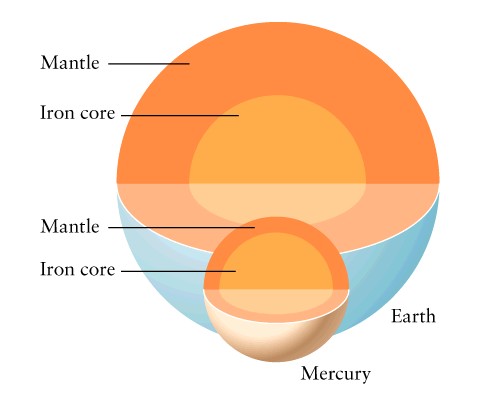
- During formation, heat from sun vaporized other elements with lower boiling points
- Why didn't this happen to the Earth?
- Brief period of intense solar wind (sun burp) may have blown away outer layers
- Mercury hit by large planetesimal
- Mariner 10 measured Mercury's magnetic field
- 1% of Earth's
- By analogy with Earth's core, there must be a liquid and solid part of iron core
- Liquid allows electric charges to move
- Solid forms from cooled liquid
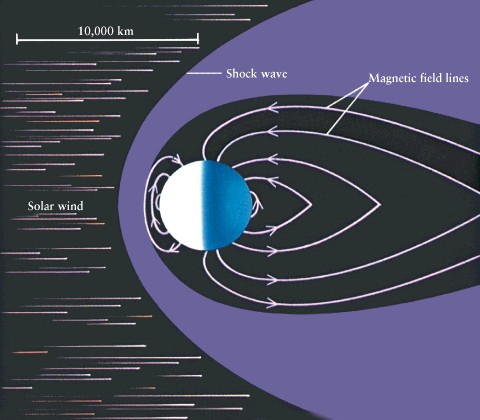
- Mercury overview
- Observing Mercury from Earth
- 3-2 spin-orbit coupling of Mercury
- Mercury's surface
- Evidence for iron core
- formation theories
- Magnetic field
Homework hints
- Chapter 18 Question 18
- average density = total volume / total mass
- volume of a sphere = 4/3pR3
- Chapter 18 Question 24
- Figure 3-5 might help you think about this
- Chapter 18 Question 25
- Use E = mc2
- Chapter 10 Question 21
- See solutions to homework #3, chapter 4 question 28